|
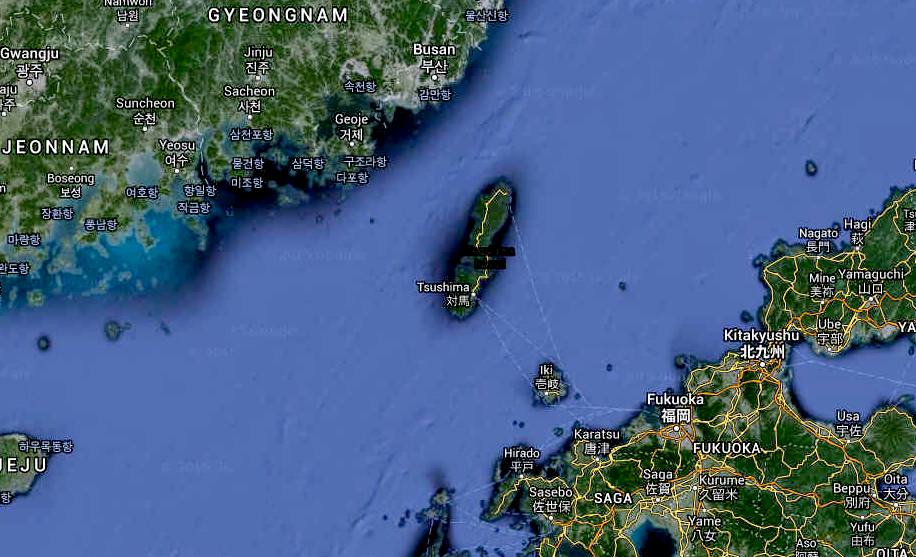
TSUSHIMA
ISLAND, KOREA STRAIT - The Ocean Cleanup Array pilot will feature floating booms spanning some 2000 meters (1.2 miles) across the surface of the water, which would be "the longest floating structure ever deployed in the ocean," according to the project website. Assuming all goes according to plan, and the array is able to effectively extract floating ocean plastic during the pilot project, the organization plans to deploy a "62-mile-long array that will be capable of capturing about half of the trash in the Great Pacific Garbage Patch" over the course of a decade, according to Al Jazeera.
OCEAN CLEANUP,
PLANS FOR 2016 - JUNE 2015 PRESS RELEASE
Boyan Slat unveiled plans for an ocean boom for 2016. According to
respected source the oceans have a plastic debris problem, and it’s growing by 8 million tons a year.
Three years ago, Dutch teenager Boyan Slat, garnered global accolades for a solution he devised for a high school science fair: a passive ocean trash collection device that would collect ocean plastic without harming marine life.
These days, Slat is a 20-year-old entrepreneur who is eager to put his massive ocean-cleaning idea to the test. A passing grade might lead to the removal of nearly half of the plastic debris floating in the Pacific Ocean in under a decade. But the process needs to be tested in real-world conditions before it can be launched at full
scale - or beat the criticism of scientists who are skeptical that it can work.
Slat’s idea reverses current marine cleanup methods: Instead of sending ships out to chase floating garbage, position a stationary, floating, V-shaped buffer in ocean currents so that water moves through it, funneling plastic debris into a container for capture and removal while allowing animals to swim past the net-free device.
To test the concept, Slat and his company, Ocean Cleanup, propose to place a 6,561-foot-long float in the Korea Strait, off Tsushima Island, by spring 2016. If realized, it would be the largest floating structure ever deployed.
“Not only will this first cleanup array contribute to cleaner waters and coasts, but it simultaneously is an essential step towards our goal of cleaning up the Great Pacific Garbage Patch,”
Slat said in a statement. “This deployment will enable us to study the system’s efficiency and durability over time.”
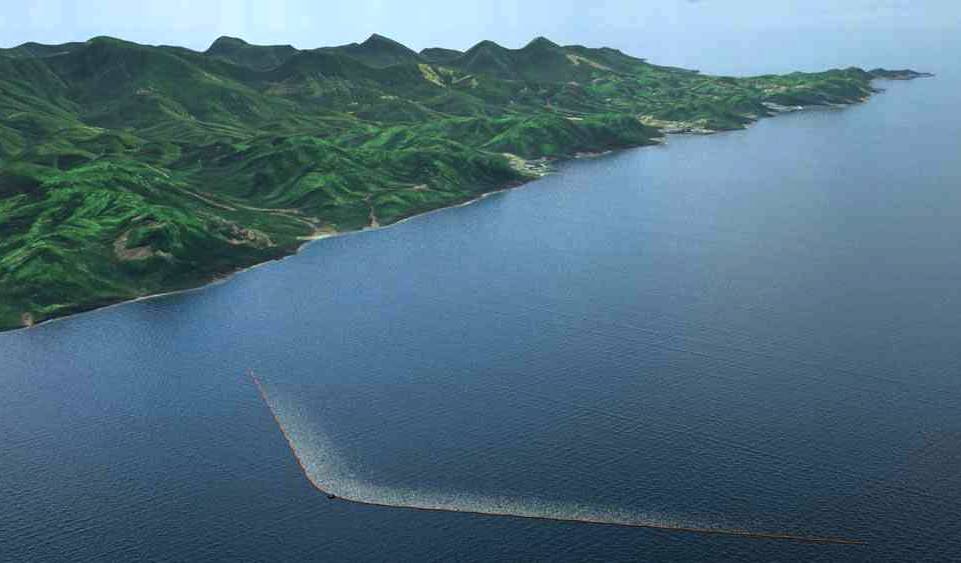
PRESS RELEASE - The array is projected to be deployed in Q2 2016. The feasibility of deployment, off the coast of Tsushima, an island located in the waters between Japan and South-Korea is currently being researched. The system will span 2000 meters, thereby becoming the longest floating structure ever deployed in the ocean (beating the current record of 1000 m held by the Tokyo Mega-Float). It will be operational for at least two years, catching plastic pollution before it reaches the shores of the proposed deployment location of Tsushima island. Tsushima island is evaluating whether the plastic can be used as an alternative energy source.
Slat announced the upcoming first deployment of the Ocean Cleanup Array at the Seoul Digital Forum, in South-Korea, stating:
“Taking care of the world’s ocean garbage problem is one of the largest environmental challenges mankind faces today. Not only will this first cleanup array contribute to cleaner waters and coasts but it simultaneously is an essential step towards our goal of cleaning up the Great Pacific Garbage Patch. This deployment will enable us to study the system’s efficiency and durability over time.”
Then, depending on the success of the project, within five years and after a series of increasingly gigantic oceanic garbage trucks, The Ocean Cleanup is planning on deploying their coup de grâce: a 100km-long system to clean up about half the Great Pacific Garbage Patch, between Hawaii and California.
Pollution, as we know, causes many environmental, economic, and health problems. For example, plastic kills over 1 million seabirds and 100,000 marine mammals every year. The animals it doesn't kill are often left deformed, as was the case with Peanut the turtle, whose shell was warped after she got stuck in a six-pack plastic ring. The same thing happened to this poor guy too.
EARLY MOBILE SYSTEMS
SLATED
Removing plastic trash from the ocean has been a huge struggle. So far, attempts to clear plastic waste from the ocean have involved ships and nets and just haven't work. According to The Ocean Cleanup, solutions that move through the ocean to remove trash tend to be ineffective and also cause more damage:
"Using vessels and nets to collect the plastic from one garbage patch would take about 79,000 years and tens of billions of dollars. Besides, such an operation would cause significant harm to sea life and generate huge amounts of CO2 and other emissions."
That is a bold statement, but what of the SeaVax system that is costed well below the boom system
and produces no CO2 - that is also designed not to cause significant harm to sea life.
The boom system is not active and can take no action to avoid harming marine life. Moreover, the booms will cause a major obstruction to shipping and wildlife migration, also attracting algal and other marine life that could clog the operation.
Ocean
Cleanup are estimating that their system could remove half the plastic from the Great Pacific Garbage Patch in just 10 years, costing 33 times less money and happening 7,900 times faster than the old vessel and net method. The emphasis
here is on the OLD! We think that is hiding the fact that there is a NEW mobile system that can target
waste using renewable energy, rather than just simply sit and wait for the
ocean currents to carry plastic to them.
That said, if the boom system can be made to work, even half as well as predicted, Boyan Slat is at least doing something. We
believe that it is all hands to the pumps. Both passive and active systems should be tested for workability. We'd like to hear any well reasoned arguments from any person or organisation on the subject.
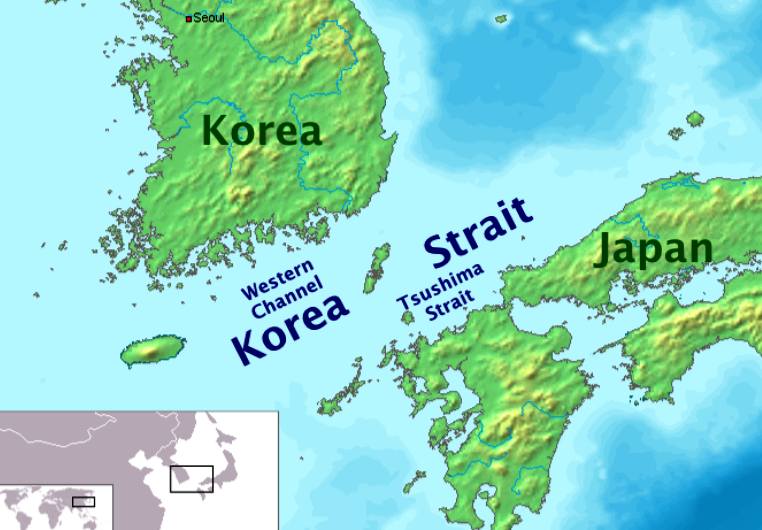
The warm Tsushima Current, a branch of the Kuroshio (Japan Current), passes north through the strait. Following the coasts of the Japanese islands, some of the current’s waters continue north to flow into the Pacific and the Sea of Okhotsk at Sakhalin Island, while the remainder swirls counterclockwise to flow south along the Asian mainland. In 1905, during the Russo-Japanese War, a Japanese fleet annihilated a
Russian force in the Battle of Tsushima Strait.
THE
GOOD, THE BAD AND THE UGLY - 6 REASONS AGAINST, JUNE 4 2015
It's all over the internet these days: a floating boom to be set out in 2016 between Korea and Japan to collect improperly discarded plastics. The two-kilometer float, to be deployed off Tsushima Island in the Korea Strait, is a bit of a test run for much larger versions the creators hope to moor in open oceans around the world within the next five years.
The team behind the project, The Ocean Cleanup, claims that their floating booms will be able to rid the oceans of plastic pollution such as found in the Great Pacific Garbage Patch, at minimal cost and effort, without posing undue risk to wildlife, within a few years. But since young inventor Boyan Slat first began, at about age 18, to get attention for his idea, marine biologists and oceanographers have been fairly pulling their hair out at the Ocean Cleanup's huge social media popularity.
It makes sense that Slat's idea has become popular. Vague but persuasive sales pitches that promise to solve problems without us having to change our behavior? They're always popular. But here's what's got those scientists in a cranky mood: Slat's idea almost certainly won't make enough of a dent in the ocean plastic pollution to be worth the effort, it will almost certainly injure wildlife already struggling from an ocean with too much of our stuff in it, and the rigs may end up becoming more shredded pieces of plastic in an ocean already literally awash in plastic.
One of the most disheartening things about the response to those scientific second thoughts is a common public response along the lines of "at least Slat is doing something about the problem, unlike these scientists who can't do anything but tear down his good idea instead of helping." That's being said about people who have, in some cases, been sounding the alarm about plastic pollution since before Slat was born. Some groups critical of Slat's idea, such as the organization 5 Gyres (about whom more in a moment), have been working feverishly to come up with workable solutions to the ocean plastics problem. Many of the critics have lauded Slat's enthusiasm, merely suggesting that it be tempered by a bit of real-world thinking.
That's not to say that big ideas might not be perfectly appropriate tools with which to tackle the problem of plastics pollution in the ocean. It's a big problem. There are five distinct "garbage patches" in the world's oceans, where discarded plastic has accumulated as a result of finding relatively stable spots between oceans' currents. The largest known of these, dubbed the "Great Pacific Garbage Patch," is usually compared in area to the state of Texas.
And that's a problem, because that plastic doesn't just sit there and float around. It gets eaten by marine life, and can cause them serious health problems
- including starvation from having a belly full of indigestible plastic. It leaches chemicals into the ocean water, and can disrupt the normal ecological functions of the open ocean, blocking sunlight that plankton depend on for photosynthesis, among other things.
In order to remedy this, Slat and his crew say they want to place as many as 24 floating booms about 1,000 kilometers long (621 miles) at strategic spots in the ocean. The booms would be designed to funnel pieces of floating plastic into collectors, from which it would be hauled elsewhere for recycling.
Slat says that his boom designs could rid the world's oceans of plastic garbage in five years, while posing minimal risk to the oceans' wildlife.
That's got a lot of people who may not have much experience with actual conditions on the open ocean pretty excited. Marine biologists, oceanographers, and engineers with experience with offshore infrastructure aren't jumping on the bandwagon quite as enthusiastically. It's great to chase bold visions, but the devil, as they say, is in the details.
Here are some of those details:-
1. Ocean plastic doesn't behave the way the project's backers say it does.
Technical details of The Ocean Cleanup's design are sparse, but it looks as though the group plans to funnel plastic into collectors using long baffles that extend three meters below the ocean surface. Their contention is that the majority of plastic debris will be floating in the top three meters of ocean.
The Ocean Cleanup conducted a study of the water column in an area in the Atlantic that they say backs up this contention. That study found that the amount of plastic dropped off "exponentially" deeper than three meters below the surface.
But as oceanographers Kim Martini and Miriam Goldstein pointed out in their review of that study, The Ocean Cleanup's team did no sampling deeper than five meters below the surface. That despite the fact that winds have been proven to mix surface ocean waters as deep as 100 meters, with plastic documented at least that deep.
Martini and Goldstein also point out that the project's June 2014 feasibility study mentions that the array won't be able to collect pieces of plastic smaller than two centimeters across. If your impression of the oceans' plastic contamination is that it's all intact grocery bags and water bottles, that may not seem like a big deal. But the vast majority of plastic in the ocean is made up of particles one centimeter and smaller, remnants of larger pieces broken up by ultraviolet light, the corrosive effects of seawater, and physical abuse from wave action and marine creatures.
In fact, as the ocean pollution activist group 5 Gyres Institute suggests, The Ocean Cleanup's plans seems to be based on a notion of ocean plastic that just isn't true. As the group's Anna Cummins wrote in January:
The idea that there are "patches" of trash in the oceans is a myth created 15 years ago that should be abandoned in favor of "clouds" of microplastics that emanate out of the 5 subtropical gyres. Our recent publication in the journal Plos One estimates 269,000 tons of plastic from 5.25 trillion particles, but more alarming than that is it's mostly microplastic (>92 percent in our study) and most of the plastic in the ocean is likely not on the sea surface. Recent research has shown microplastics in ice cores, across the seafloor, vertically throughout the ocean, and on every beach worldwide. The little stuff is everywhere.
If you follow the life of plastic in the oceans, as we have done for 50,000 miles since 2009, you find the large items leaving coastlines in droves, then it rapidly shreds as it migrates toward the calmer waters of the subtropical gyres where sunlight, waves and nibbling fish rip it to micro-size particles smaller than a grain of rice. Microplastic then flow [s] through the bodies of billions of organisms, making their way out of the gyres to deeper currents, and ultimately the seafloor. That's the end-life of plastic.
Included in the burgeoning world of microplastic: microbeads, an arguably useless gimmick included in personal care products now entering the world's oceans in alarming amounts. KCET's "SoCal Connected" looked at microbeads in a segment earlier this year. 5 Gyres and others are working to ban microbeads jurisdictions worldwide.
In other words, if 98 percent of the problem plastics in our oceans are the size of grains of rice or smaller, building a plastic collector that takes only pieces larger than 2 centimeters from the top three meters of the ocean would seem a fairly useless exercise.
2. The collectors will break really, really quickly.
It's hard to imagine a better description of actual conditions in the oceans' gyres than this one, written by veteran ocean conservation activist Stiv Wilson, Policy Director for 5 Gyres Institute, in 2013:
So far, we've taken one gyre cleanup advocate across the South Atlantic, from Brazil to South Africa. We had 22 days of storms with seas in excess of 30 feet at times. By the time we got to the other side, some 30-plus days later, he'd abandoned his hope of cleaning the gyres once he realized how big a "place" we're talking about... the sea is one giant corrosive force. Even on just a month-long sail across The South Atlantic, we tore our sails twice, broke some rigging, and utterly destroyed a wind-powered generator
- all due to the force of nature. Any blue water sailor will tell you about how destructive the sea is to anything with moving parts. That's why sailors say, "a boat is a hole you fill with money." Heck, outer space is less corrosive to machines than the ocean is.
Promotional photos offered by the Ocean Cleanup folks show the booms floating on a nearly flat, glassy sea, where it's easy to imagine them remaining intact for months on end. In 30-foot seas, how long would those booms last before breaking apart? Martini and Goldstein, in their review of the project's June 2004 feasibility study, express serious doubts whether the structures would withstand bluewater stresses for very long.
In that review, Martini and Goldstein pointed out that the study "severely underestimated" the stresses to which the booms would be subject under typical ocean storm conditions. The designers modeled their study on average ocean currents rather than likely peak currents, raising the possibility that the booms would be exposed to tougher currents than they could handle as much as half the time. (It's the extremes, not the averages, that break equipment.)
In order to keep the booms stably placed within the currents they're intended to clean, they'd need to be securely moored. Slat and company say that some of the booms would be deployed in water as much as 4,000 meters deep. That's twice the current maximum depth at which ships or other structures have ever been moored.
And when the currents in which the booms are moored shift, point out Martini and Goldstein, the booms could deform, seriously reducing their ability to collect plastic
- or even spilling collected plastics back into the ocean.
And then there's the issue of "biofouling," the term of art used to mean "marine critters using your expensive equipment as a place to live." Place a rigid object in the ocean and within 24 hours, bacteria and diatoms will have attached to it, creating a "biofilm" that then provides habitat for algae and protozoans. That in turn provides a place for larger organisms like tunicates, sponges, mollusks, and crustaceans
- barnacles being the most familiar example of the latter.
And that adds weight to the structure. The Ocean Cleanup's feasibility study itself says that biofouling could add tens to hundreds of kilograms of extra weight per square meter of submerged surface. That could sink the booms. It would change the way currents flow along that three-meter-deep skirt beneath the booms, altering the efficiency with which the booms funnel plastic into the collection area.
There's also potential for damage from a very specific kind of biofouling: larger fish "vandalizing" the structures. "Fish bite" damage to submerged equipment, from sensors to mooring lines, is a real thing.
Slat's test next year will deploy a boom that's one five-hundredth the length of the proposed booms that are his ultimate goals. It remains to be seen how well that far shorter model holds up in the relatively protected waters of the Korea Strait. As currently described, it seems likely that the larger versions would, after the first winter storm, become part of the floating ocean plastic problem
- 600 miles of plastic per boom.
3. The project will harm wildlife.
Slat's team says in its feasibility study that they don't have a workable solution to the biofouling issue, saying that mechanical cleaning of 24,000 kilometers of boom floating in the open ocean would be too expensive. Martini and Goldstein point out that
the only other approach that's even close to workable would be for The Ocean Cleanup to use so-called anti-biofouling coatings on their equipment, to slow down the rate at which the structures are colonized by marine life.
Though research is being done into new surfaces that are resistant to biofouling, using nanomaterials technology, the standard anti-biofouling coatings in use these days are chemical treatments that contain "biocides." Biocides are pretty much what they sound like: substances that kill living things. The idea is that biocides incorporated into the coatings will deter organisms from forming that biofilm that starts the biofouling process.
The problem is, anti-biofouling coatings have a finite effective lifespan. And that's in part because the biocides leach out of the coatings.
Imagine 24,000 kilometers of boom coated with anti-biofouling coatings leaching biocides into the ocean -- from a project intended to benefit marine life.
The most effective biocidal coatings, and the most widely used, are compounds in the tributyltin family, which are known to leach into seawater and pose documented risks to microorganisms and larger marine life. Some governments have moved to phase out tributyltin, but there aren't many economical alternatives.
The booms pose physical threats to marine life as well. The designers claim that neutrally buoyant microorganisms such as plankton will merely flow beneath the three-meter skirts. That may be true for some species, but marine biologists point out that the North Pacific gyre (for instance) has planktonic organisms that don't stray from the highly oxygenated waters found right at the surface of the ocean, and that such species would likely be swept up in large numbers. Any plankton that's swept up into the collectors will be separated out by centrifuge, the effects of which Miriam Goldstein described thusly in a marine scientists' email list server conversation:
Most zooplankton don't survive being caught in a standard manta net, never mind being spun in a centrifuge. They might still be twitching, but they have lost a lot of their important parts, like antennae and feeding apparatus. When we want to capture live zooplankton, we use special live-collection nets and are very, very careful. For gelatinous zooplankton like salps, the only way to bring them up in good condition is to individually capture them in glass jars on SCUBA. I am highly skeptical that any significant proportion of zooplankton are viable after caught in a net and spun at 50 RPM.
As for larger organisms, the feasibility study itself says this:
Highly migratory species will be highly affected by this project. Swordfish, marlin, sailfish, sharks, tuna-like species are all highly susceptible to being caught in the holding tanks, and possibility diverted by the booms into the platform.
The Ocean Cleanup makes much of the fact that their booms are unlikely to directly ensnare large wildlife due to the skirt's smooth surfaces. Due to biofouling, those smooth surfaces may not last long. Among the pieces of plastic floating in the ocean are "ghost nets," discarded pieces of fishing net sometimes hundreds of meters long. With 24 1,000-kilometer booms scattered across the oceans, the possibility that such ghost nets would get hung up on patches of barnacles growing on the skirts is significant. And since the boom would be moored and the ghost nets would suddenly stop moving with the current, animals that do move with the current would face greater threats from those nets.
As mentioned above, the public image of plastic pollution in the oceans differs greatly from reality: only a tiny percentage of discarded plastic is found in large floating pieces that would be easily swept up by Slat's booms. Ironically, such floating plastic is highly likely to have itself been "biofouled," adopted as a home by marine organisms that would be injured or killed during the collection process.
In 2014, Charles Moore - original discoverer of the "Great Pacific Garbage Patch"
- found a floating island in the North Pacific thought to mainly consist of trash washed out to sea by the 2011 Japanese tsunami. The 50-foot island was home to an apparently permanent population of sea anemones, algae, clams, and mussels. That's just an indication of how readily wildlife will colonize every available surface in the ocean
- including floating plastic. And that means that the plastic Slat's design can collect is the plastic most likely to have wildlife stowaways.
One wonders just how much help from The Ocean Cleanup the oceanic wildlife of the world can withstand.
4. Recyclers don't want the plastic.
Slat and his colleagues say that the end destination of the collected plastic is land-based plastics recyclers. This is unlikely to turn out to be the case. Unlike glass and aluminum and high-quality paper, which can be recycled a number of times into products similar to the original.
But when you put your plastic water bottle in the recycling bin, you won't be getting a recycled plastic water bottle at the other end of the process. Plastics' polymer chains break down too readily when melted, meaning that your water bottle becomes a lower-grade plastic product, and usually not a disposable one.
That means that plastics recycling is actually better called "downcycling," and it's not a solution to the problem of disposable plastics. And that's assuming that plastics recyclers have access to a supply of clean, sorted, high-quality discarded plastic, such as you might find in a residential or office recycling bin.
Slat's machines, on the other hand, will be collecting plastic that's been drifting in the ocean for who knows how long, its polymer chains under attack from dissolved salts and ultraviolet light, and absorbing environmental contaminants from random industrial harbors. Instead of being readily sortable bottles and bags, much of the collected plastic will be in small pieces, and that means recyclers would need to use spectrographs to determine whether the salvaged plastic is polyethylene, polyproplylene, polystyrene, or something else altogether.
Plastic recycling is a completely marginal industry, with supply of scrap plastic far outstripping demand. It's only a de facto subsidy by recycling collection programs, which provide a mostly clean, mostly sorted source of scrap plastic at low cost, that makes plastic recycling even slightly feasible. Offer to truck hundreds of tons of contaminated mixed plastic to those recycling facilities, and it's doubtful you'd get a polite response.
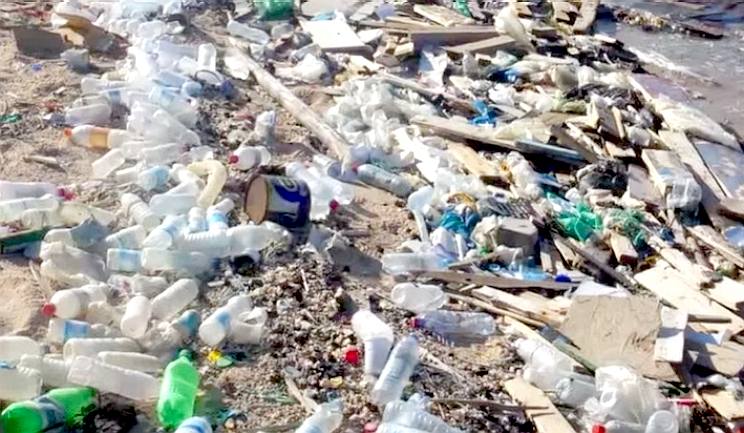
5. There's a far more effective way to clean large plastic pieces from the ocean's gyres.
It's called "beach cleanup." Current thinking (no pun intended) has it that as much as half the plastic in a gyre is jettisoned in each rotation, where it then follows ocean currents wherever they lead. often enough, those currents lead to beaches, where the plastic can be removed by volunteer labor with minimal harm to wildlife. If it's not picked up off the beach, the next storm can wash it back out to sea, where it may eventually rejoin a gyre.
That makes our beaches a very accessible part of the ocean plastic garbage cycle, and it just makes sense to focus our ocean plastic cleanup efforts on that low-hanging fruit.
In 2014 on one Beach Cleanup Day in California alone, 66,292 volunteers collected 564 tons of trash, some 80 percent of which was single-use disposable plastic items. That's 564 tons of trash that won't be joining the Garbage Patch.
You can find the next beach cleanup event near you at The Ocean Conservancy's website.
6. It's far more efficient, cheaper, and safer to keep the plastic out of the ocean in the first place.
In a way, it's ironic that supporters of Slat's project in social media have been accusing critics of not contributing to solutions to the issue of plastic pollution, because the net effect of The Ocean Cleanup may well be to persuade regular folks that the problem has been solved, and they don't need to take action to limit the amount of plastic that goes into the world's waterways.
There are initiatives already taking place that promise to significantly reduce the amount of plastic trash making its way into our oceans. More and more places are enacting bans on disposable plastic grocery bags, a major component of plastic pollution. Single-use plastic water bottles are another bit of low-hanging fruit just asking to be banned, a move some national parks have already taken. As mentioned above, bills to ban plastic microbeads are advancing, including Assembly Bill 888, which passed the California Assembly in May and is now being considered by the California State Senate.
We're not discounting the importance of clever technological approaches; they just don't belong on the ocean. Some municipalities have had good results from putting screens on
storm drains and collecting the accumulated plastic. Baltimore operates a "Water Wheel" where the river Jones Falls flows into the city's Inner Harbor. In the last year, that device has filled dumpsters with almost 200 tons of trash that would have flowed into Chesapeake Bay.
But the ultimate solution to the problem of ocean plastics is to stop using so much single-use, disposable plastic in the first place, whether as packaging or in single use items such as drinking straws. Once that plastic gets to the ocean, there's no technological quick fix, no matter how much we might want there to be one. We've got to stop counting on some bright young inventor to save the planet and start doing it ourselves.
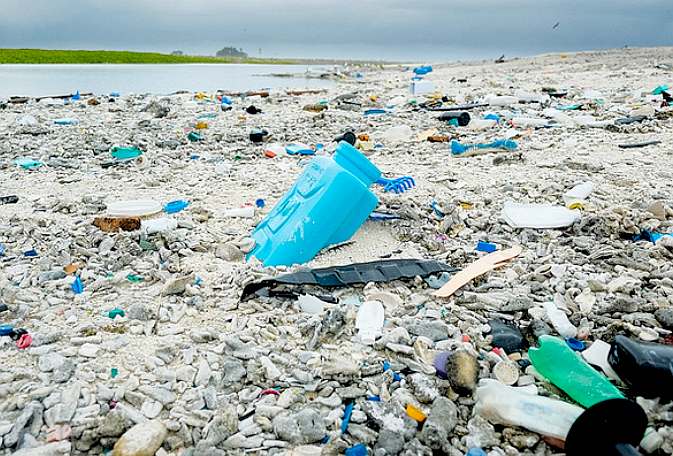
ABOUT
THE KOREA STRAIGHT
The Korea Strait is a sea passage between Japan and South Korea, connecting the East
China Sea and the Sea of Japan in the northwest Pacific Ocean. The strait is split by the Tsushima Island into the western channel and the Tsushima Strait (eastern channel).
To the north it is bounded by the southern coast of the Korean Peninsula, and to the south by the southwestern Japanese islands of Kyūshū and Honshū. It is about 200 km (120 mi) wide and averages about 90 to 100 meters (300 ft) deep.
Tsushima Island divides the Korea Strait into the western channel and the Tsushima Strait. The western channel is deeper (up to 227 meters) and narrower than the Tsushima Strait.
A branch of the Kuroshio Current passes through the strait. Its warm branch is sometimes called the Tsushima Current. Originating along the Japanese islands this current passes through the Sea of Japan then divides along either shore of Sakhalin Island, eventually flowing into the northern Pacific Ocean via the strait north of Hokkaidō and into the Sea of Okhotsk north of Sakhalin Island near Vladivostok. The water-mass characteristics vary widely because of the low-salinity waters of the southeast coasts of Korea and China.
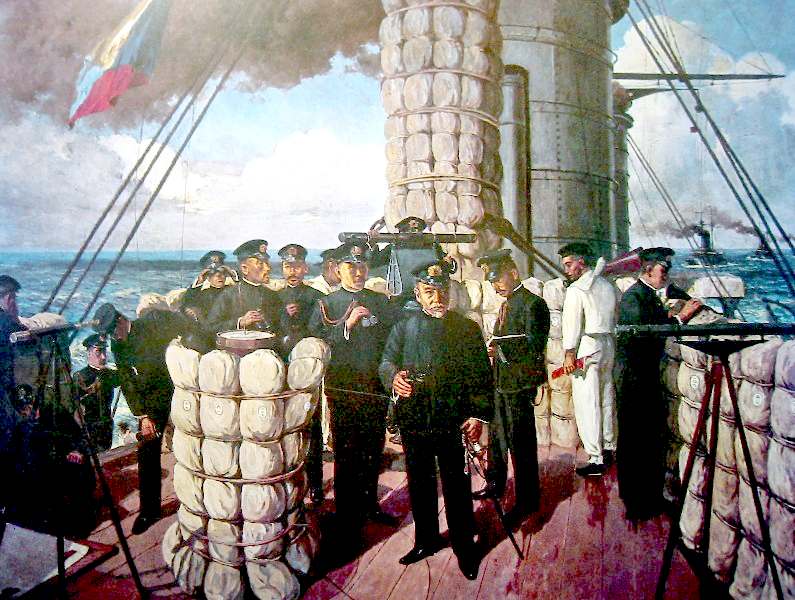
BATTLE OF TSUSHIMA
The Battle of Tsushima, fought between the Japanese and Russian navies on May 27 and May 28, 1905, took place in the Tsushima Strait part of the Korea Strait, east of the north part of Tsushima and due north of Iki Island. The Russian fleet was virtually destroyed by the
Japanese.
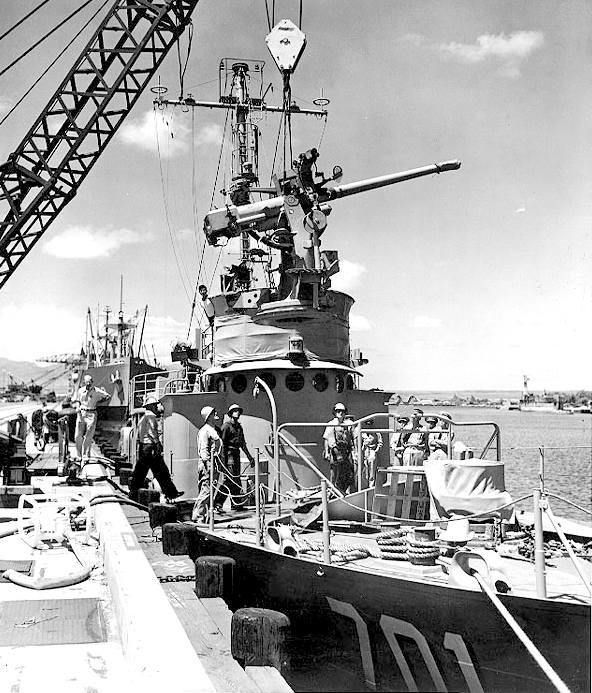
BATTLE OF KOREA STRAIT
The Battle of Korea Strait was a small naval battle fought on the first day of the Korean War, 25-26 June 1950, between the navies of South Korea and North Korea. A North Korean troop transport carrying hundreds of soldiers attempted to land its cargo near Busan but was encountered by a South Korean patrol ship and sunk. It was one of the first surface actions of the war and resulted in an important South Korean victory.
OCEAN
CLEANUP CONTACTS
The Ocean Cleanup
Stevinweg 1
2628 CN Delft
The Netherlands
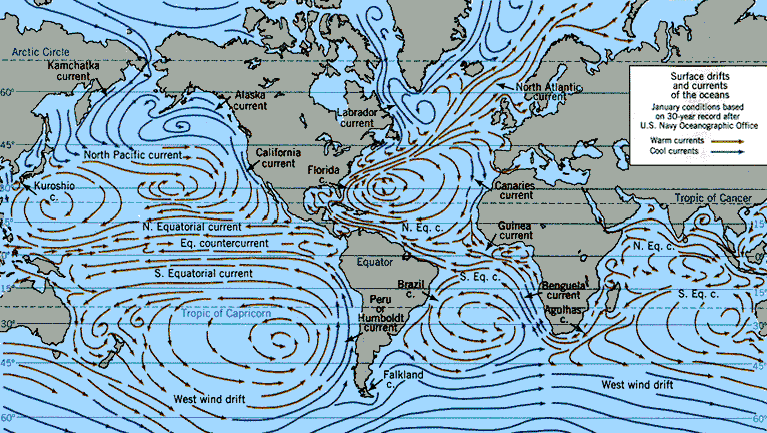
Millions of tons of trash enter the ocean each year and cluster in particular areas of the world’s oceans. One of the most infamous plastic debris patches is located in the North Pacific Subtropical Gyre, commonly referred to as the Great Pacific Garbage Patch (GPGP).
This piece of “plastic soup” is twice the size of Texas and contains six times more plastic than plankton biomass.
ACIDIFICATION
- ADRIATIC
- ARCTIC
- ATLANTIC - BALTIC
- BERING
- CARIBBEAN - CORAL - EAST
CHINA
ENGLISH CH
-
GOC - GULF
MEXICO
- INDIAN
-
IRC - MEDITERRANEAN -
NORTH SEA - PACIFIC
- PERSIAN GULF - SEA
JAPAN
STH
CHINA - PLASTIC
- PLANKTON - PLASTIC
OCEANS - SEA
LEVEL RISE - UNCLOS
- UNEP
WOC
- WWF
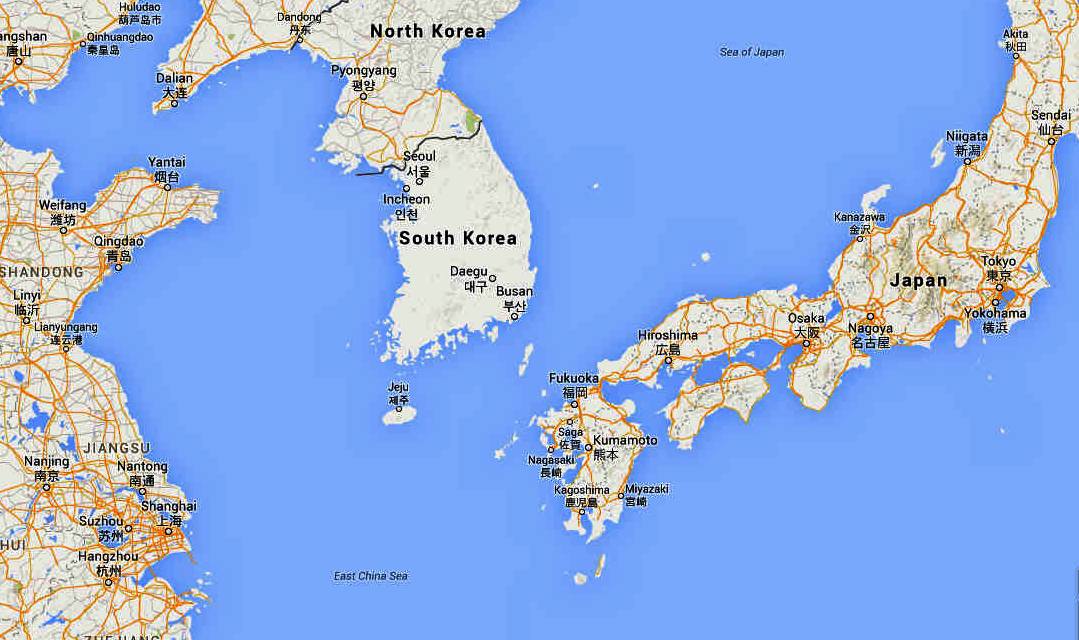
THE
OCEAN CLEANUP PROJECT HISTORY 2012 - 2020
2012
- TED Talk
2013
- Company Formation
2014
- Concept Revisions
2015
- Scale Model Tests
2016
- North Sea Trial
2017
- Pipe Size Reduction
2018
- Wilson & Scale Test
2019
- Sea Trials Pacific
2020
- The Future
OCEAN
CLEANUP PROJECTS A - Z
*
Aliance
to end Plastic Waste
*
Boyan
Slat's ocean booms
*
4Ocean
recycled plastic bracelets
*
Kulo
Luna graphic novel
*
Ocean
Voyages Institute
*
Ocean
Waste Plastic
*
Seabin
*
Sea
Litter Critters
*
SeaVax
autonomous drones
*
World
Oceans Day
LINKS
& REFERENCE http://www.britannica.com/place/Korea-Strait https://en.wikipedia.org/wiki/Korea_Strait https://en.wikipedia.org/wiki/Battle_of_Korea_Strait http://www.kcet.org/news/redefine/reduce/plastics/6-reasons-that-floating-ocean-plastic-cleanup-thing-is-a-really-bad-idea.html http://www.treehugger.com/clean-technology/teens-ocean-plastic-cleanup-device-launch-next-year.html http://techxplore.com/news/2015-06-ocean-plastic-cleanup-team.html http://www.upworthy.com/the-longest-floating-structure-in-world-history-is-about-to-hit-the-ocean-to-fix-a-very-big-problem http://www.theinertia.com/environment/the-worlds-first-ocean-cleanup-system-is-being-deployed-in-2016/ http://inhabitat.com/worlds-first-ocean-cleanup-array-will-start-removing-plastic-from-the-seas-in-2016/ http://www.trueactivist.com/longest-floating-structure-in-history-sets-out-to-clean-the-ocean-in-2016/ http://www.tindosolar.com.au/2015/06/worlds-first-ocean-cleanup-array-will-start-removing-plastic-from-the-seas-in-2016/
http://www.britannica.com/place/Korea-Strait https://en.wikipedia.org/wiki/Korea_Strait https://en.wikipedia.org/wiki/Battle_of_Korea_Strait http://www.kcet.org/news/redefine/reduce/plastics/6-reasons-that-floating-ocean-plastic-cleanup-thing-is-a-really-bad-idea.html http://www.treehugger.com/clean-technology/teens-ocean-plastic-cleanup-device-launch-next-year.html http://techxplore.com/news/2015-06-ocean-plastic-cleanup-team.html http://www.upworthy.com/the-longest-floating-structure-in-world-history-is-about-to-hit-the-ocean-to-fix-a-very-big-problem http://www.theinertia.com/environment/the-worlds-first-ocean-cleanup-system-is-being-deployed-in-2016/ http://inhabitat.com/worlds-first-ocean-cleanup-array-will-start-removing-plastic-from-the-seas-in-2016/ http://www.trueactivist.com/longest-floating-structure-in-history-sets-out-to-clean-the-ocean-in-2016/ http://www.tindosolar.com.au/2015/06/worlds-first-ocean-cleanup-array-will-start-removing-plastic-from-the-seas-in-2016/
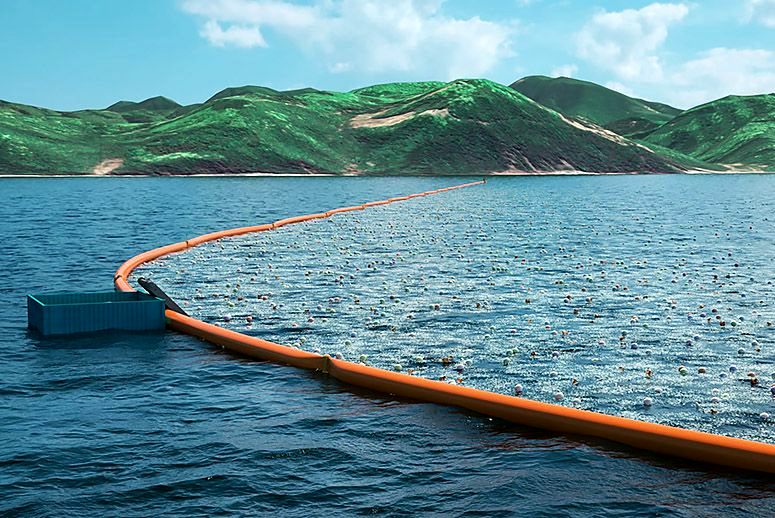
SEAVOLUTION - A non-polluting vessel such as the Bluefish ZCC concept
could be an ideal base machine when it comes to filtering garbage from the world's ocean
gyres. Several of these cleaners operating as Atlantic, Indian and Pacific
ocean fleets could make such
conservation measures cost effective, and even potentially attractive to
governments around the world - for the health of the world. Recovered
plastic could be processed to produce oil, energy or recycled products.
Better than letting fish and seabirds eat the waste and kill themselves, and
who knows how that may affect us, where seafood is an essential resource for
mankind. Click on the picture above to read more >>>>>>
|









